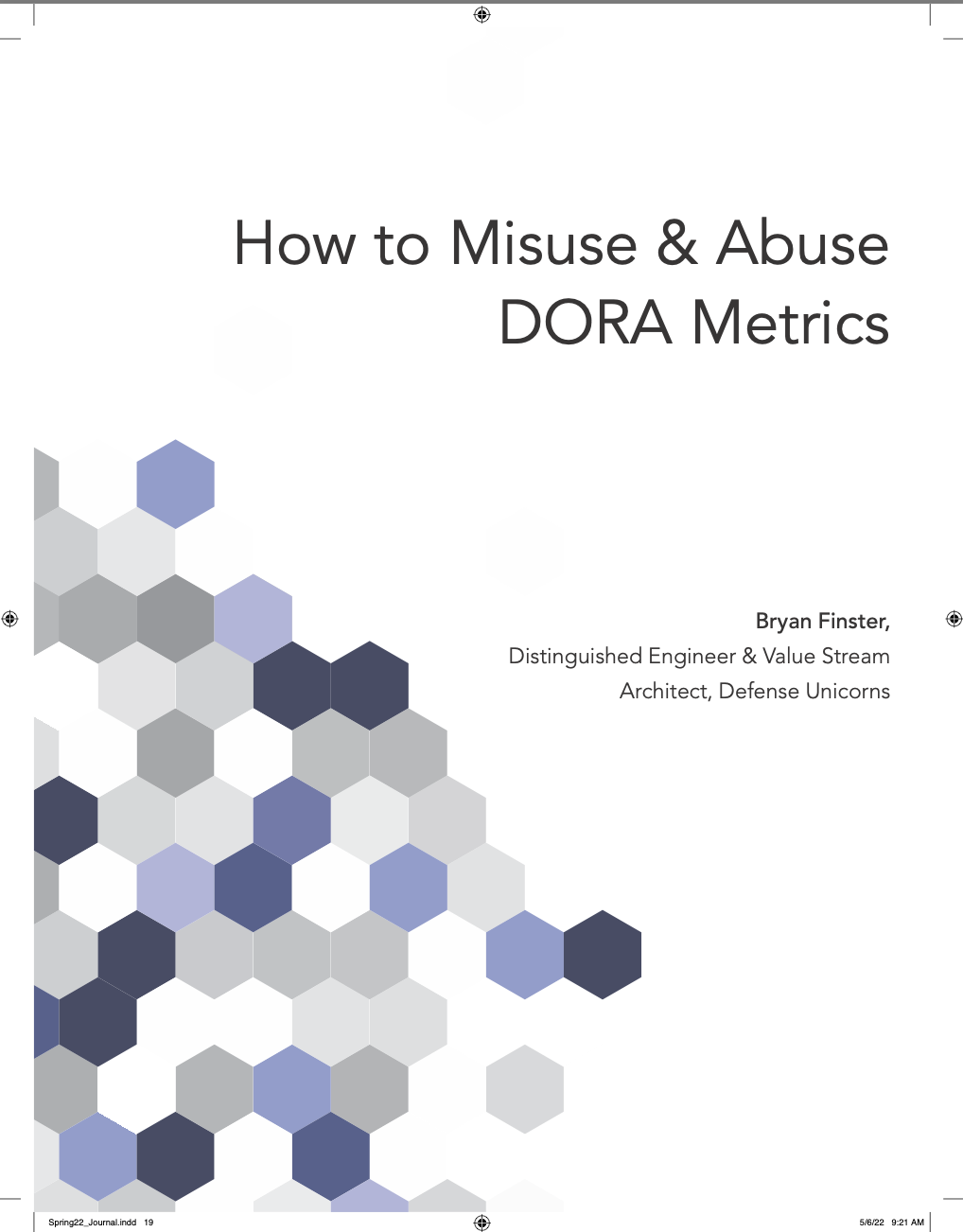How to Misuse & Abuse DORA Metrics
Understanding and implementing DORA metrics effectively
DevOps Enterprise Journal Spring 2022 by IT Revolution
Summary
This article explains how organizations often misuse DORA metrics—deployment frequency, lead time, change-fail rate, and mean time to restore—by turning them into performance targets or vanity dashboards. It shows how these metrics are intended as signals to guide continuous improvement, not as goals in themselves. The paper urges leaders to pair DORA metrics with customer-value, culture, and sustainability measures, invest in trust and team learning, and focus on improving delivery processes rather than chasing numbers.
Key Topics Covered
- Origins and Purpose of DORA Metrics: How the Accelerate research established four metrics (Deployment Frequency, Lead Time, Change-Fail Percentage, Mean Time to Restore) to indicate software delivery performance
- Common Misuses: Pitfalls such as chasing speed over quality, turning metrics into quarterly OKRs, or using dashboards as vanity scorecards that compare teams out of context
- Guidance for Correct Use: Treat metrics as team-level improvement tools, not performance ratings; measure processes, not individuals; supplement with guardrails like defect rates, CI frequency, and cultural indicators
- Balanced Measurement Framework: Advocates linking efficiency, customer value, sustainability, and culture to business goals, ensuring metrics drive real outcomes, not just activity
- Cultural Foundations: Emphasizes trust, shared mission, and continuous learning as essential for genuine, lasting improvement
Key Insights
- Metrics Are Signals, Not Goals: DORA metrics highlight system health but cannot guarantee improvement if treated as hard targets
- Process Over People: Sustainable gains come from improving team workflows and quality gates, not from measuring individuals
- Balanced, Guardrailed Measurement: Pair DORA metrics with defect rates, customer satisfaction, and team-health metrics to avoid perverse incentives
- Trust and Learning First: Without organizational trust and a culture of experimentation, metrics create fear and stall change
- Continuous, Context-Aware Improvement: Encourage small, frequent changes and rapid feedback loops tailored to each team's environment
The paper provides detailed guidance on implementing DORA metrics effectively, including common anti-patterns to avoid and strategies for creating a culture of continuous improvement around measurement and delivery excellence.
Target Audience
- Engineering & DevOps Leaders: CTOs, VPs, and platform/product leaders seeking to scale continuous delivery responsibly
- Team Leads & Architects: Practitioners implementing CI/CD and value-stream improvements
- Transformation Coaches & Agile/Lean Practitioners: Change agents aligning metrics with culture, customer outcomes, and business strategy
